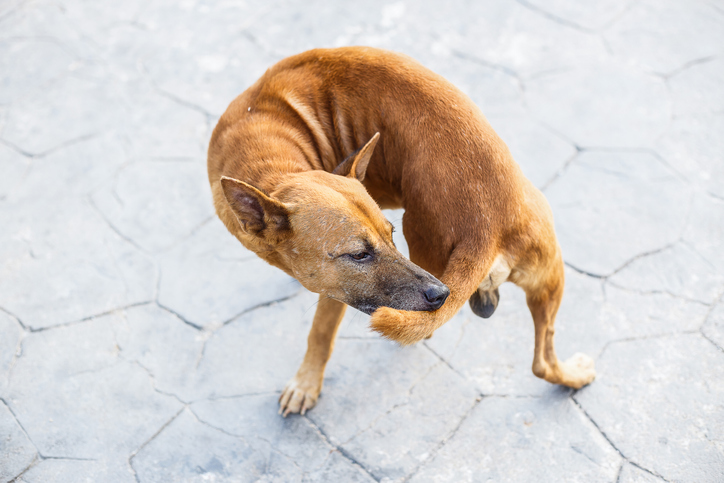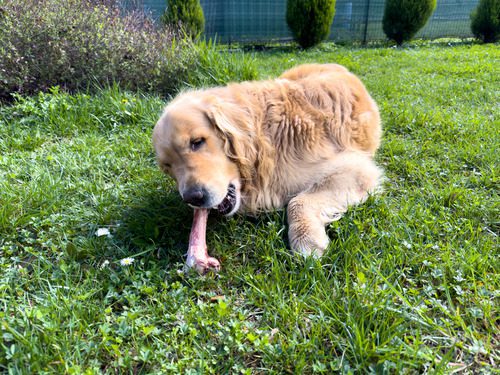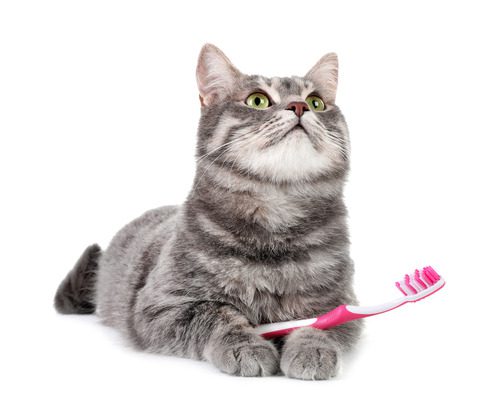Dog Chasing Tail: Why Do They Do This?
Does your dog chase their tail? Is this normal dog behavior, or should you be worried? Is there ever a cause for concern when dogs chase their tails, or is it always okay?
If you have a dog who chases their tail a lot, these are probably questions you’ve asked yourself before. In the article below, we’ll walk you through some of the most common causes of tail chasing behavior in dogs to help you get a better idea of whether something is wrong with your pet.

Being a Puppy
If your dog is still younger than two years old, they may be chasing their tail just because they have a lot of puppy playfulness to let out. Tail chasing at an early age is completely normal, and there is typically nothing wrong with a young dog or a puppy who chases their tail frequently in play.
You can usually tell if your dog is playing with their tail rather than chasing it for some other reason. They may roll around, fall over, and otherwise show signs of playfulness while interacting with their own tail, for example.
Boredom and Restlessness
Boredom and restlessness cause a variety of odd behaviors in dogs, including tail chasing and tail biting. Your dog may simply have nothing better to do than chase their tail, especially if they are left alone a lot of the day without access to toys or other household pets to play with.
Try playing with your dog interactively, taking them on plenty of walks, and making sure they are stimulated mentally with treat and puzzle toys, too. The more you exercise your dog and encourage them to use their mind, too, the less likely they will be to chase and bite their tail out of boredom.
Anxiety and Fear
Anxiety and fear can sometimes present as tail chasing behaviors, especially in dogs who are nervous in many different situations. Your dog may chase their tail because they find it comforting in some way or distracting from a situation that has made them scared.
If your dog’s tail chasing happens when they encounter other dogs, hears fireworks, or gets in trouble for something, you may be able to associate the behavior with anxiety and fear. In dogs who suffer from moderate to severe anxiety, it may be necessary to treat the problem with anti-anxiety medications as directed by your veterinarian.
Looking for Attention
Sometimes, your dog is just chasing their tail because they are looking for attention! If you often react to your dog’s tail chasing by laughing, praising, playing with, or otherwise interacting with them, they may quickly learn that this is a good way to get your attention.
If you don’t want your dog to chase their tail for attention, you can try ignoring them when they start chasing it. Over time, they will learn they are not going to get the attention they want every time they chase their tail. However, it is perfectly safe to let your dog continue doing this, too.
Fleas and Skin Problems
Fleas are one of the most common causes of tail chasing in dogs who are not otherwise prone to this type of behavior. If your dog’s tail chasing occurs along with chewing, especially at the base of the tail, fleas and other parasites are a likely cause.
Some other skin health problems may contribute to tail chasing in your dog as well. One common skin problem associated with tail chasing is food allergy. Since food allergies in dogs often present as skin and coat health problems, tail chasing can be associated with the itchiness and discomfort of a canine food allergy.
Brain Issues
Although this cause of tail chasing is considerably less common than the others listed here, there is a chance your dog’s tail chasing behavior could be cause by a brain issue. Some of these issues include damage to the brain from injury, and brain tumors.
Only your vet can accurately diagnose your dog’s brain health issue. If your pet is diagnosed with one of these problems, you’ll need to work closely with veterinary specialists to manage the condition.
No Need to Worry About Tail Chasing
As you can see, most of the time, tail chasing is nothing to worry about. This behavior is common in dogs and usually doesn’t signify any serious underlying health problems. However, there are some instances in which tail chasing can mean there’s something more serious going on with your pet.
If you’re unsure whether your dog is okay, or if you suspect they may be dealing with a serious problem contributing to tail chasing, take your dog to the vet. Your vet will be able to perform a variety of tests to help determine the underlying cause of this behavior.
If you want to talk with a veterinarian about your dog’s tail chasing behavior call one of our Heart + Paw locations or book an appointment online!
Recent Posts
Can Dogs Eat Ham?
Ham is a popular meat found on many dinner tables, especially during the holidays. As a dog…
8 Signs and Symptoms of Diabetes in Dogs
Caring for a dog means being tuned in to the subtle changes that can reveal their overall…
Why Dogs Can’t Eat Chocolate and Tips for Keeping This Sweet Treat Out of Their Reach
Chocolate is a beloved indulgence for us, but for our dogs, it’s a hidden danger that can…
Why Cat Teeth Cleaning is Important For Your Pet’s Health
As a cat owner, you know how important it is to care for your feline friend’s overall…
Cat Body Language: A Guide To Understand What Your Cat is Telling You
Imagine trying to communicate without words, relying solely on subtle gestures, glances, and movements. This is how…
About Us
Heart + Paw was founded in 2018 by Chief Veterinary Officer Dr. George Melillo, who currently serves the Mid-Atlantic area. Heart + Paw offers a combination of veterinary care, pet grooming, and dog daycare to help be a resource in your pet parenthood journey.
We'd Love to Meet Your Four-Legged Friends
Find out how the friendly veterinary team at your local Heart + Paw can help your pets live longer, healthier lives by searching for a location near you.





